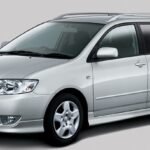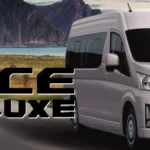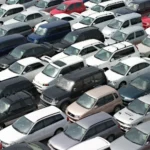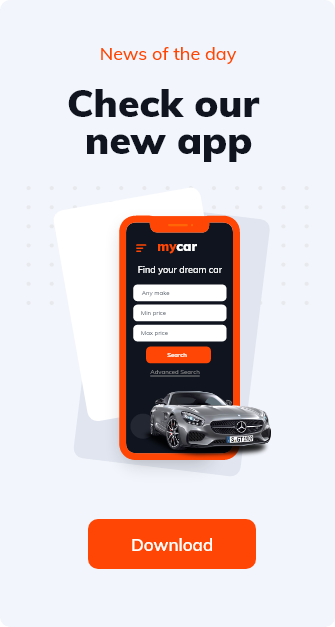

The art of importing a used car from Japan to Kenya
Most Kenyans think it’s near impossible to buy a car directly from Japan and bring it to Kenya.
Every other Kenyan may already know of someone with a horror story of how they were scammed by online car sellers. And yet when you look around, Kenyan roads are filled with used Japanese cars. Car dealers with at least 50 cars on display abound in prominent places. You wonder, is there a manual somewhere that car dealers are referring to when they import cars from Japan? If there is, where can you get a copy because you really just want to personally import a car from Japan.
Short answer is yes. Yes, there is a manual and you are reading it right now. This article will try to demystify how importing used cars from Japan is done. You will learn the step by step process on how professional car dealers do it. They also started where you are now, and the years of experience they gained is what this article is talking about.
Step 1. Find a reliable car exporting company. Make contact with them.
Set a criteria for the car exporter you want to deal with. There are several great used car exporters in Japan. The company you end up with will determine how smooth your experience will be. My checklist includes:
- Transparent business operation
- Experience
- Accreditation
After you’ve done your research and are confident that you may have found your company, go ahead and make contact. Email them, chat with a representative, call – it’s up to you. State your business. Don’t hesitate to ask your questions. Hopefully you’ve listed down all the questions you need answers to.
Step 2. Choose your car.
Visit the companies’ website and go through their stock options. Company stocks are listed according to countries because each country has its own import regulations that is different from Kenya’s. To make it easy for you, go straight to the Kenyan flag and browse the stocks listed in it. The two factors that directly affect importation of a used car to Kenya are:
- Age limit – only cars that are less than eight years (based on registration year) can be imported into Kenya
- Driver side – Kenya does NOT ALLOW any left-hand drive vehicle for importation andregistration. Only special vehicles like ambulances or vehicles for government use are exempted.
When you click on any car, you can see several images of the car from different angles, important technical details about the car, and its FOB price. Here is a great example of a stock list from AA Japan, one of Japan’s most trusted exporters.
When discussing payment options, here are some of the most used terms in the car importing industry:
- FOB – free on board
This is the price you immediately see displayed on websites. This price does not include shipping charges and surcharges, import duties and all other extraneous fees. Since these additional fees are outside the control of exporting companies, we only display the price we can control. - CNF – cost, no insurance, freight (or cost & freight)
This is a price quoted if you want the exporter to include freight charges on top of the fob price. - CIF – cost, insurance, freight
This is a price quoted if you want the exporting company to include freight insurance on your car. For example, Japanese insurance firm Tokiomarine-Nichido lists the following claims included with their insurance packages: (different insurance companies have different claims available, please check with them for more details. Pricing varies.) Claims for freight damage , Claims for joint loss, Transportation costs, Others (not covered by above) - RORO – roll on roll off
RORO is one form of shipping cars to Kenya. The cars are being driven as is into the shipping storage, and then driven off the ship once it reaches Mombasa port. - Container shipping
Cars are placed into 20 or 40 ft containers, and the containers are then placed on the ship. Upon arrival in Mombasa port, the container is taken off the ship and the car inside is carefully displaced. - Proforma Invoice
A proforma invoice is a digital invoice/agreement that indicates theamount you must pay and a fine print on the conditions of the transaction that you entered with the exporter. It also contains details about the car you are buying.
Step 3. Discuss payment options.
Ask for a sales quote or proforma. This is a document that your seller prepares which states the amount agreed upon by both of you for the unit you want to buy. When you visit a bank to pay, bring the proforma with you. There is more than one way to pay for your car, but that all depends on your exporter.
- TT – telegraphic transfer
Telegraphic transfer is a method of payment where you remit your payment in person to the exporter’s bank account. You and the exporter will get a receipt for the transaction. It usually takes at least three business days for a telegraphic transfer payment to be received by the exporter. The exporting company lists in its website the bank information where you can legitimately send your payment. - Paypal
If going to a bank is inconvenient, you can choose to pay online through PayPal. PayPal payments take longer to process. A complete transaction can be anywhere between 3-10 business days. - Local office
You can also visit the company’s local office to pay for your purchase. If you are in Nairobi, paying a visit to the company’s local office can be an option. You will feel more reassured when you can meet staff from the company you’re dealing with.
The TT payment – most Kenyans choose to pay by TT because it is the safest and most transparent. When you pay by telegraphic transfer, you must go to your bank to remit payment in person. Try to attach your invoice to the transfer form and inform the teller to include the main details about the car (car brand, engine and reference number). Scan the transfer form and send a copy to your seller.
Generally, companies require for payment to clear before your car is shipped. Before shipping, there are other processes that are being done and documents being prepared so your car smoothly transfer to you.
Step 4. Wait for documents.
Your exporter will be responsible for three documents. Take note that these documents are only a part of all the documents required to clear your car from the Customs in Mombasa. Let’s go through each of the documents and its significance to you.
Export Certificate
The Export Certificate proves that the car you bought was legitimately sold to and bought by the exporter. Therefore, the car is legally allowed to be resold and brought out of the country. To get this Export Certificate, the car’s owner must first personally deregister the car from his/her name at the local Japanese Transport Authority. The deregistration document is then converted into the Japanese Export Certificate at the Japanese Customs Office. Once ready, this document will be mailed to the exporting company.Road Worthiness Inspection (RWI) Certificate
As of publication, Kenyan regulations require that each car for Kenya be inspected by a representative of QISJ (Quality Inspection Services Japan) for road worthiness. The inspection must be done in Japan before your car is loaded in the ship. Once it passes inspection, QISJ will issue a certificate which will then be mailed to the exporting company.Bill of Lading
Investopedia defines bill of lading as “a legal document issued by a carrier to a shipper that details the type, quantity, and destination of the goods being carried. A bill of lading also serves as a shipment receipt when the carrier delivers the goods at a predetermined destination. This document must accompany the shipped products, no matter the formof transportation, and must be signed by an authorized representative from the carrier, shipper, and receiver (https://www.investopedia.com/terms/b/billoflading.asp).”
In short, a B/L is THE receipt that shows and proves that the car you’re claiming in the port has been bought and paid for by you. The B/L contains your name and other identifying details, so you MUST BRING this document with you when claiming your car. A B/L requires a notify party (person or company that will be notified of the arrival of the shipment – a clearingagent or you) and a consignee party (you or whoever will claim the car from the port). Once this receipt is ready, it will be mailed to the exporting company.
After your payment has been verified as cleared, the exporter will make sure that the three documents are readied as quickly as possible. Because each document is issued by different companies, each document will be received separately, and it may take time to collect all of them. When all three documents have been gathered, your exporter will mail these documents to you in a single packet as part of the paperwork required to claim your car.
If you are excited to see how these documents look like, or just want assurance that your car is definitely on its way to you, you can and should ask for a digital version of each document from your seller. To track the progress of your car in the importing process, you can create a customer account in the exporter’s website. There you can check all the documents, payments, receipts and other details any time you want.
Step 5. Clear your car from Customs
At best, it takes 3-4 weeks for your car to reach Mombasa port. You will be informed once your car has left Japan. Sometimes it may take longer than 4 weeks. Once the ship has left Japan, your exporter has no more control on what can happen to your car. Along the way to Kenya, the shipping company decides the route, the stops, and everything in between.
When the ship arrives in Mombasa, you will be informed as well. The shipping company decides how long they can hold your car for you while you take care of the clearing process.
The clearing process in the Customs is also beyond the control of your exporter. There will be fees, taxes and duties, and additional documents that Customs will require before your car is released. All these will be your responsibility. For starters, Kenya Revenue Authority has this page, https://www.kra.go.ke/en/individual/importing/learn-about-importation/procedures-for-motor-vehicle, for your reference. The clearing process is complicated and can only be accomplished by a licensed agent. Find you a competent agent and you can complete the clearing process in five working days. To know exactly how the clearing procedure happens, read the next article (How to import a used car from Japan to Kenya: Part 2) for the step by step guide.
Customers’ fear of being scammed is not an issue that car exporters take lightly. Several articles have been written on how to import used cars from Japan to Kenya safely. However, Kenyan import regulations change often, and companies upgrade their business practices too.
The bottom line is, the more you know about how to import used cars, the safer and smoother your experience will be. Besides, you can save as much as 200 000 KSH if you import by yourself. If that’s not the ultimate motivation, what else is there?
Add a comment Cancel reply
Categories
- Auction (2)
- Car Models (7)
- Importing Process (5)
- Shipping (3)
- Stock (1)
Recent Posts
About us

Related posts


The guide to import used cars from Japan to Jamaica

How to import cars from Japan to Trinidad: Part 2 - Clearing Customs











